iuniti séven Fighting for our rights
1
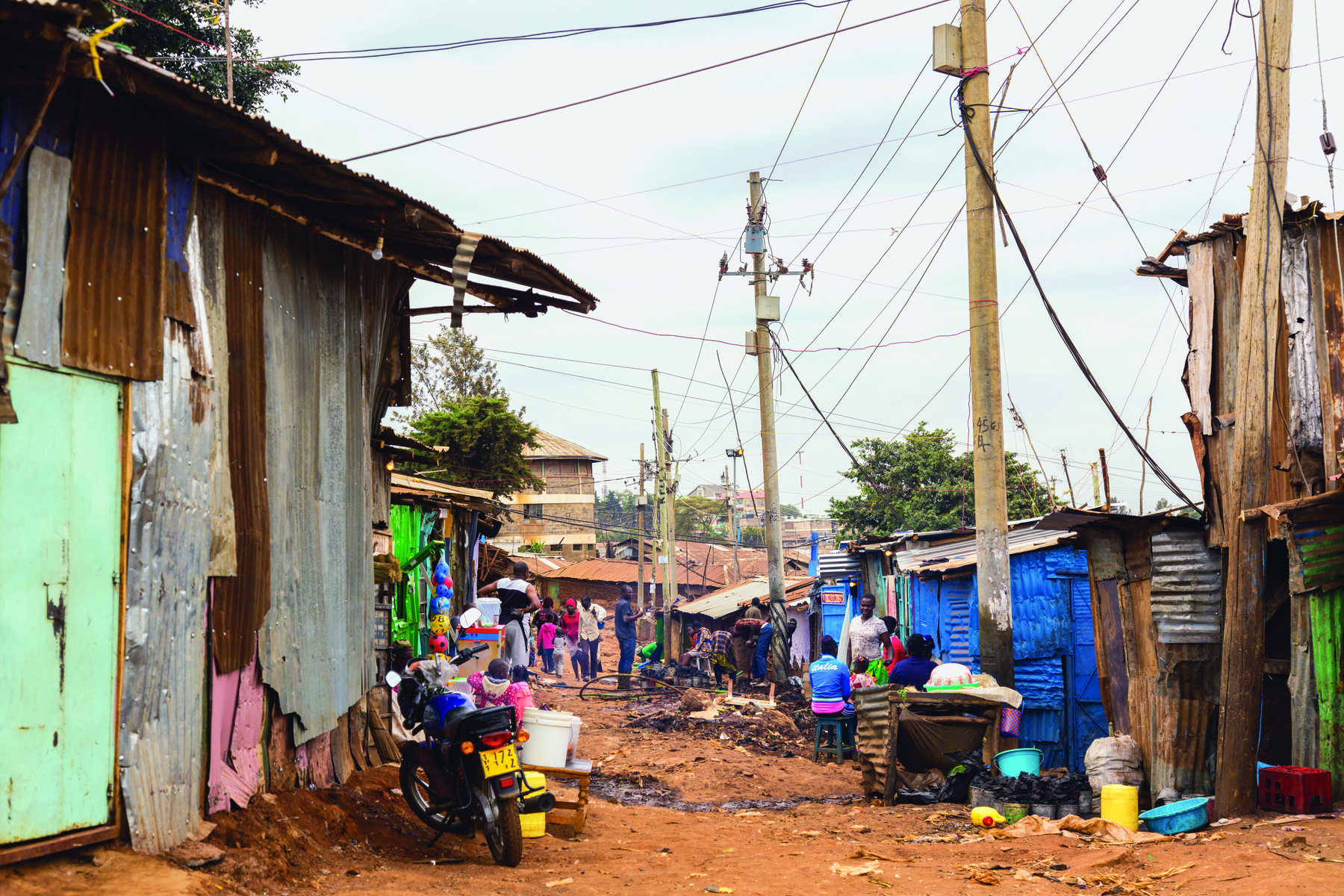
2

3
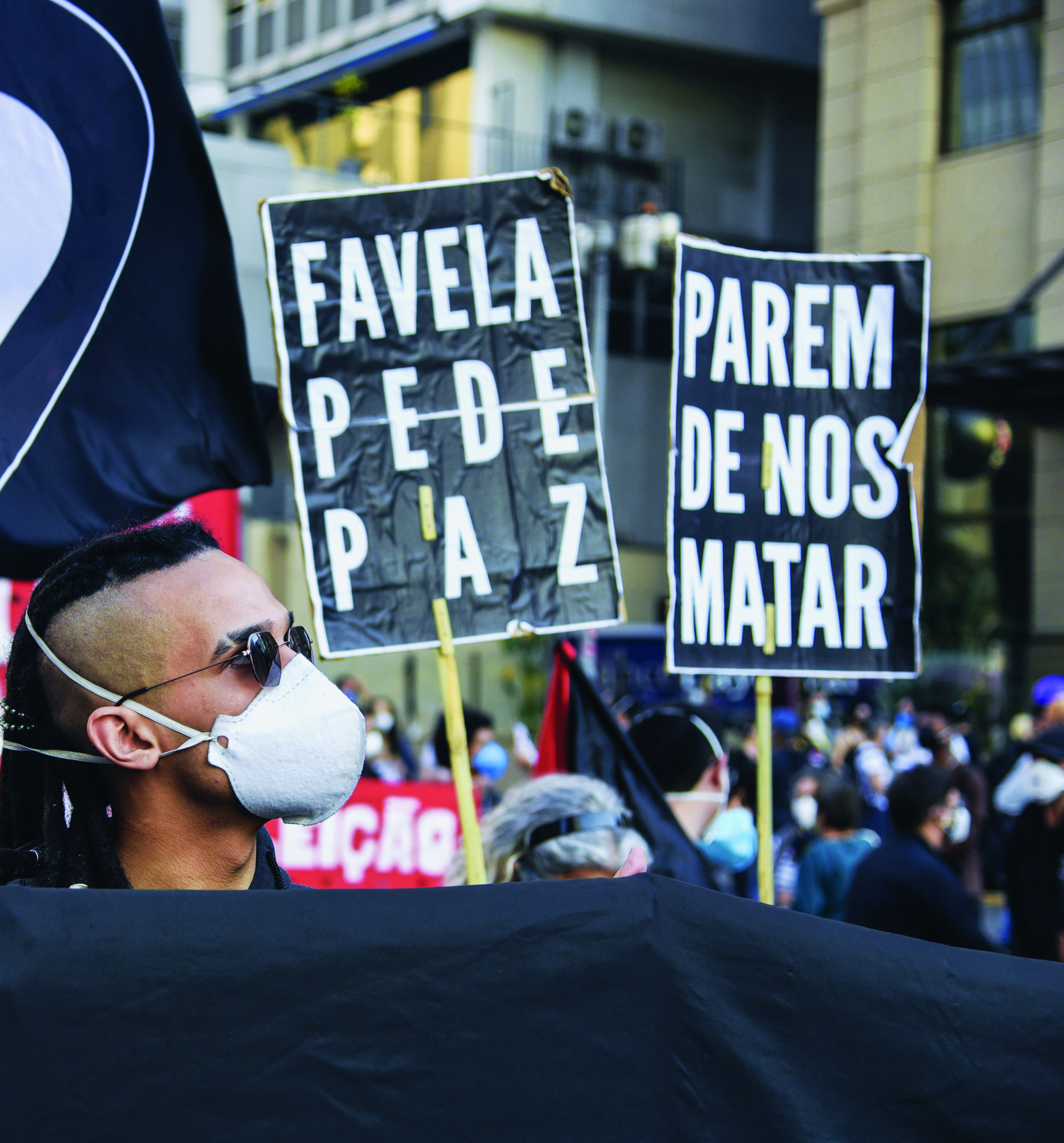
4
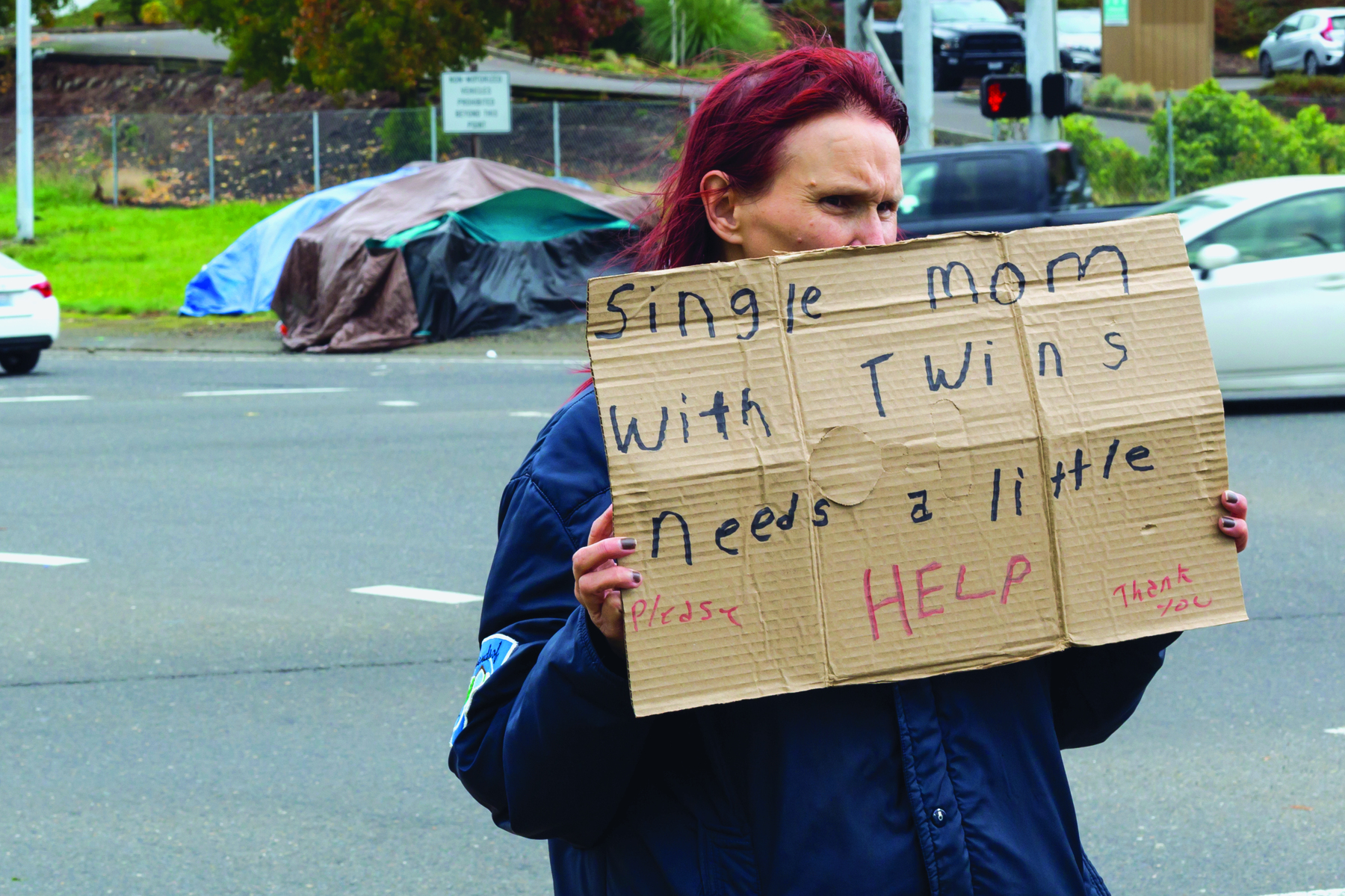
5

Respostas e comentários
Unit 7
Competências gerais e específicas desenvolvidas na unidade
A unidade pretende desenvolver as competências gerais 1, 2, 4, 5, 7, 9 e 10 e as competências específicas de Língua Inglesa 1, 2, 3 e 4, que estão descritas na página trinta e um do Manual do Professor.
Habilidades desenvolvidas na unidade
ê éfe zero nove éle ih zero um / ê éfe zero nove éle ih zero dois / ê éfe zero nove éle ih zero três / ê éfe zero nove éle ih zero quatro / ê éfe zero nove éle ih zero cinco / ê éfe zero nove éle ih zero sete / ê éfe zero nove éle ih zero nove / ê éfe zero nove éle ih um zero / ê éfe zero nove éle ih um um / ê éfe zero nove éle ih um dois / ê éfe zero nove éle ih um quatro
Objetivos da unidade
A unidade aborda os direitos humanos, partindo do Programa Nacional dos Direitos Humanos pê ene dê agá-3 (Decreto nº 7 037/2009), que concebe a efetivação desses direitos como “uma política de Estado, centrada na dignidade da pessoa humana e na criação de oportunidades para que todos e todas possam desenvolver seu potencial de forma livre, autônoma e plena”. Parte, portanto, de princípios essenciais a cidadania e civismo e a educação em direitos humanos, um tema contemporâneo transversal (tê cê tê), e a consolidação da democracia no Brasil. Para isso, busca discutir situações em que os direitos humanos são desrespeitados e pensar em formas de promover a luta contra esse desrespeito. No campo da Educação para a Paz, o objetivo é levar os ou as estudantes a refletir sobre sua própria responsabilidade em relação à defesa dos direitos humanos e à cobrança de seus direitos. Já em relação aos aspectos linguísticos, a unidade apresenta uma revisão dos três tempos verbais: present simple, past simple e present perfect. Quanto ao léxico, procura-se abordar os conectores (linking words).
Objetivos
- Compreender as características de uma campanha não publicitária.
- Compreender as características de uma fotorreportagem.
- Compreender áudios sobre racismo.
- Compreender e utilizar os conectores (linquin uôrds).
- Criar uma campanha para conscientização sobre um dos direitos humanos.
- Debater e promover os direitos humanos.
- Discutir sobre uma situação relacionada aos direitos humanos, apresentando argumentos e ouvindo opiniões diversas.
- Revisar e empregar os tempos verbais Prézent simpou, pésti simplôl e présenti - pãrfécti .
First interactions
- Discuss these questions with your classmates.
- What do the pictures have in common? What problem can you find in each of them?
- Have you ever experienced these situations or seen people living in such conditions in your city or country? Can you mention other situations that are not ideal for human beings to live in?
- In your opinion, what are the risks and harms of living in such conditions?

Agents of change
What are human rights? How can knowing them help us fight for our rights?
Going further
“Human rights are rights inherent to all human beings, regardless of race, sex, nationality, ethnicity, language, religion, or any other status. Human rights include the right to life and liberty, freedom from slavery and torture, freedom of opinion and expression, the right to work and education, and many more. Everyone is entitled to these rights, without discrimination. [...]”
HUMAN Rights. United Nations, [sem local, sem nome]. Disponível em: https://oeds.link/kgx6kB. Acesso em: 10 julho 2022.
Respostas e comentários
1. a) Respostas possíveis: The pictures show situations in which people don’t have their rights respected: 1. People living in poor conditions near open sewage; 2. A hospital without resources and unable to offer emergency care; 3. Violence in the community; 4. A mother of twins who needs help with food and maybe shelter; 5. Lack of adequate transportation for the population.
1. b) Respostas pessoais. Ver Notas.
1. c) Respostas possíveis: 1.People may get diseases or have health problems; 2. People may not have medical assistance in emergencies; 3. People could be at risk in their community; 4. Living on the streets in precarious conditions may expose people to risks and diseases; 5. commuters ou passengers may need to wait too long for their transportation and take overcrowded buses, trains or subways. Ver Notas.
Agents of change. Ver Notas.
Notas
Atividade 1
b professor ou professora, espera-se que os ou as estudantes comentem se as situações representadas nas imagens da seção e os problemas que foram levantados no item “a” fazem parte de seu dia a dia, seja por experiência própria, seja por meio de pessoas próximas. Se julgar que eles ou elas podem ficar constrangidos por falar sobre sua própria experiência, sugere-se não expor os ou as estudantes, mas conversar sobre o assunto de maneira geral para que eles ou elas percebam que determinadas situações não são adequadas e que é importante lutar para que os direitos humanos de todos ou todas sejam assegurados.
c professor ou professora, o objetivo desta questão é permitir aos ou às estudantes que percebam quais são os prejuízos à população que sofre com o desrespeito aos direitos humanos, como as situações representadas nas imagens.
Perguntar quais são as desvantagens e os riscos de se viver em situações precárias, como aquelas em que vivem muitas pessoas, inclusive no Brasil.
First interactions
Esta seção procura levar os ou as estudantes a perceber as várias formas de desrespeito aos direitos de todo ser humano e cidadão, como falta de segurança e de saúde, condições precárias de moradia e ou ou falta de moradia e falhas no transporte público. O objetivo é chamar a atenção deles ou delas para o fato de que esse tema é pertinente a todos ou todas, que, portanto, devem lutar por esses direitos. A partir das imagens, espera-se que os ou as estudantes possam pensar em outras situações em que os direitos humanos não são cumpridos e garantidos, principalmente na região em que vivem.
Agents of change
professor ou professora, sugere-se utilizar a definição do boxe “Going further” e promover uma discussão sobre quais seriam as responsabilidades dos ou das estudantes em relação à defesa e à luta pelos direitos humanos, mesmo que por meio de pequenos atos. Pedir exemplos do que eles ou elas poderiam fazer em sua própria cidade e, claro, em sua escola e comunidade. Conversar sobre a importância de se sentir parte da escola, da comunidade, da cidade e do país e explicar que só é possível alcançar uma sociedade mais justa e igualitária a partir do senso de comunidade. Além disso, é oportuno permitir aos ou às estudantes que notem que conhecer os próprios direitos, especialmente por meio da leitura das leis brasileiras e de nossa Constituição, é um passo importante para que eles sejam garantidos.
Reading
Stopping racism
Pre-reading
1. Look at the cover of this magazine and answer the questions orally.

a. What is happening in the picture?
b. Read the text on the cover. Do you know what it refers to?
Reading
2. Now read a photojournalism article related to the cover in activity 1 and the “Going further” box about human rights. Then answer the questions in your notebook.
TIME | LightBox
SIGN IN SUBSCRIBE
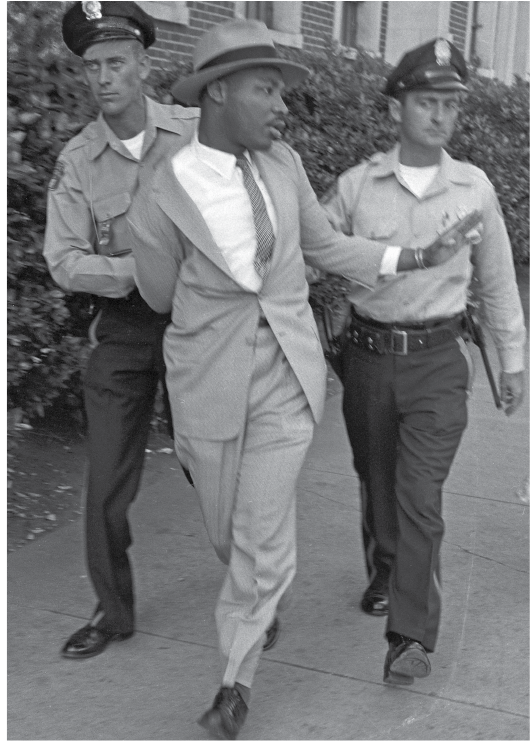
Police officers O. M. Strickland and J. V. Johnson apply force in arresting the Reverend Martin Luther King for loitering near a courtroom where one of his integration lieutenants was on the stand. King charged he was beaten and choked by the arresting officers. Police denied the charges. 1958.

Respostas e comentários
1. Ver Notas.
1. a) There is a man running from a group of policemen.
1. b) Respostas pessoais. Ver Notas.
2. Ver Notas.
Reading
Esta seção busca trabalhar com dois gêneros textuais: fotorreportagem e campanhas não publicitárias. O objetivo é promover a reflexão sobre um tema relacionado à luta pelos direitos humanos: o racismo. A fotorreportagem tem como intuito resgatar parte da história do movimento pelos direitos civis nos Estados Unidos, mostrando que as condições de vida entre negros e brancos não eram e, muitas vezes, ainda não são iguais. Com base na contextualização do tema racismo, são usadas campanhas não publicitárias que buscam conscientizar as pessoas sobre atitudes racistas. Espera-se que o trabalho com ambos os gêneros promova uma leitura reflexiva e crítica da realidade, formando cidadãos ou cidadãs mais conscientes e agentes de mudança. As habilidades trabalhadas na seção são ê éfe zero nove éle ih zero cinco: identificar recursos de persuasão (escolha e jôgo de palavras, uso de cores e imagens, tamanho de letras), utilizados nos textos publicitários e de propaganda, como elementos de convencimento (aqui trabalhada em campanhas não publicitárias), e ê éfe zero nove éle ih zero sete: identificar argumentos principais e as evidências ou exemplos que os sustentam.
Notas
Atividade 1
professor ou professora, a intenção não é fazer qualquer tipo de propaganda da revista, mas apresentar o veículo da mídia em que o tema foi abordado. Vale, então, ressaltar que, de acordo com o Parecer CNE/CEB nº 15, aprovado em 4 de julho de 2000, “o uso didático de imagens comerciais identificadas pode ser pertinente desde que faça parte de um contexto pedagógico mais amplo, conducente à apropriação crítica das múltiplas formas de linguagens presentes em nossa sociedade, submetido às determinações gerais da legislação nacional e às específicas da educação brasileira, com comparecimento módico e variado.”.
Saiba mais em: Parecer CNE/CEB 15/2000. Disponível em: https://oeds.link/WCn9BE. Acesso em: 18 agosto 2022.
b professor ou professora, este é o momento de explorar o conhecimento prévio dos ou das estudantes sobre o que houve nos Estados Unidos em 1968 e em 2015, procurando descobrir qual é a temática retratada na imagem (o racismo). As atividades que seguem permitem desenvolver melhor o tema e contextualizar o conteúdo.


[…] Civil Rights marchers wearing placards reading, “I AM A MAN” pass by on March 29, 1968. It was the third consecutive march held by the group in as many days. Rev. Martin Luther King Jr., who had left town after the first march, would soon return and be assassinated.
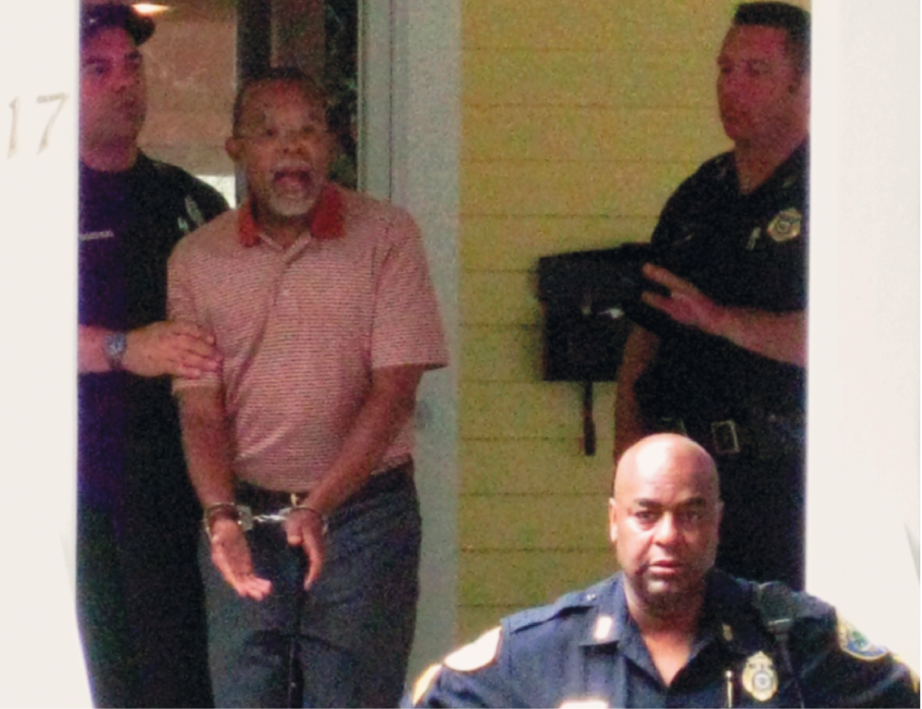
Henry Louis Gates Jr., center, the director of Harvard University’s W.E.B. DuBois Institute for African and African American Research, is arrested at his home in Cambridge, Mass, on July 16, 2009.
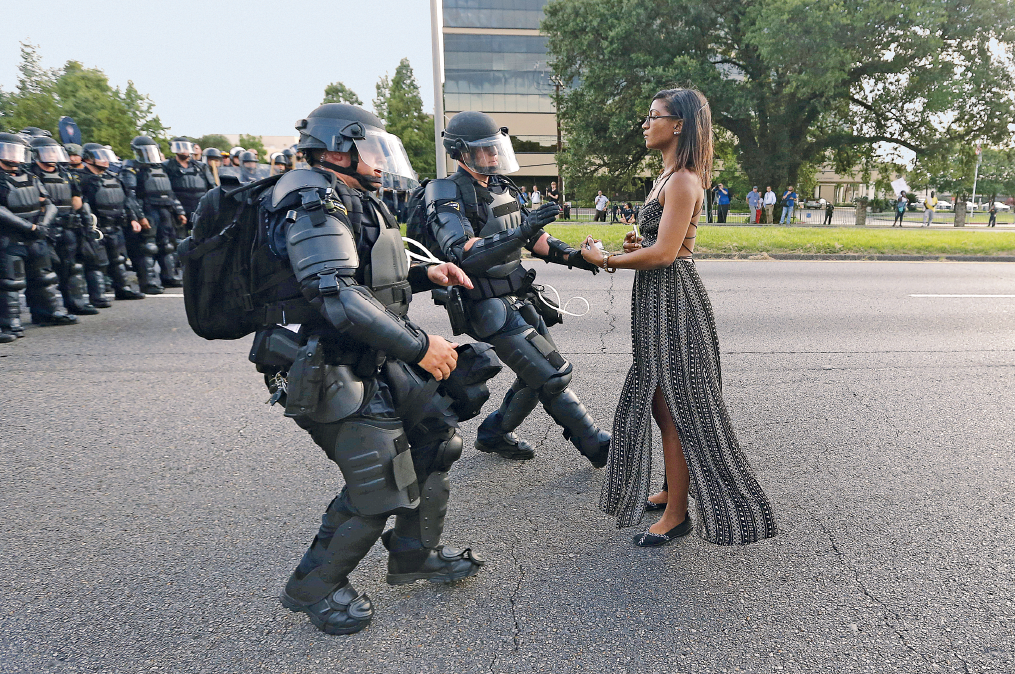
A demonstrator protesting the shooting death of Alton Sterling is detained by law enforcement near the headquarters of the Baton Rouge Police Department in Baton Rouge, Louisiana, U.S., on July 9, 2016.

Respostas e comentários
Notas
Atividade 2
professor ou professora, para evitar imagens que incitem a violência, a segunda foto da fotorreportagem foi substituída por uma da mesma marcha pelos direitos civis, mas que não apresenta armas de fogo.
Informações adicionais
Martin Luther King Júnior (1929menos1963): o ativista político estadunidense foi um dos líderes do movimento pelos direitos civis dos ou das negros ou negras nos Estados Unidos. Em 1963, proferiu um discurso que ficou famoso pela frase “eu tenho um sonho”. Foi assassinado em 1968, pouco antes de uma marcha pela causa que defendia.
Henry Louis Gates Júnior: nasceu em 1950 na Virgínia, nos Estados Unidos. É doutor em literatura inglesa pela Universidade de Cambridge e especialista em culturas africanas e afroamericanas. Trabalha como professor na Universidade de Harvard desde 1991.
Alton Sterling (1979-2016): homem negro estadunidense de 37 anos que levou vários tiros de policiais sem qualquer justificativa condizente. A morte de Alton Sterling foi tema de diversos protestos nos Estados Unidos.

LIGHTBOX
How Photographs Define the Civil Rights and Black Lives Matter Movements
Mark Speltz
Sep 22, 2016
As race relations flare up and crises unfold in America’s streets, the rate at which we create and consume digital content skyrockets. The most powerful and compelling snapshots, news photographs and video footage that rise out of an onslaught of imagery stick in our brains, forming a visual memory or imprint refreshed or strengthened with each successive encounter. Real-time news coverage increasingly relies on images that not only saturate the news − they can influence how events are depicted and remembered for decades to come. [...]
The shootings and explosive protests for justice that follow repeatedly amplify issues of race, profiling, and police violence against minorities. Black Lives Matter activists denounce the killings, demand accountability and that America acknowledge and reckon with its racist past. Armed with bullhorns, signs, and cell phones, protesters nationwide stage demonstrations, block city streets and highways, and encounter armored police forces bearing military-grade weaponry. Each time a name becomes a hashtag, dramatic pictures by photojournalists, artists, and activists themselves document the historical moment for all the world to see − and share. [...]
Pictures from Black Lives Matter protests resemble Civil Rights era photography and serve many of the same crucial roles. Photographs documenting meetings, marches and demonstrations convey immediacy and inspire activism. While some images tell stories and illuminate the joys and struggles of everyday people working for change, others reveal how local people and their communities are suffering. [...]
These visual representations represent only a millisecond of a long, contested struggle, but shape how we see and remember these events for years to come.
The astounding amount of imagery documenting today’s marches and racial struggles is enabled, not surprisingly, by technology. [...]
But this immense digital output can only make an impact and be seen by others if it is shared through expansive social networks and with ever-changing technologies and apps. [...]
The gripping pictures documenting and coming out of the Black Lives Matter movement have undoubtedly changed the course of our recent history, just as stirring Civil Rights era photographs did more than five decades earlier.
Most Americans today learn about the Civil Rights Movement through photographs. [...]
Photography played an important role in advancing the struggle for justice and equality. Compelling pictures on front pages of newspapers and in glossy news magazines raised awareness of the burgeoning movement, while others shocked the nation. [...] Civil Rights organizers understood eye-grabbing pictures could build sympathy for the cause, attract financial support, and prod politicians to offer protection and eventually, enact landmark legislation. Photographic coverage conveyed not only the intensity of the struggle but also made the massive resistance to change visible.


Few today fully appreciate how Dr. Martin Luther King Jr. and scores of activists strategized and sought that type of photographic coverage. Yet, no matter how important these photographs were and powerful they remain, solely focusing on images of brutality and violence provides an incomplete picture of the era. Because of this, Americans are less familiar with critical moments of strength, agency and determination.
Photojournalists and activist photographers also documented little-known campaigns from coast to coast with pictures that told even more stories. [...]
[...] today’s activists are able to frame the struggle, shape their own visual representations, and amplify their grievances and hopes for a new America more freely and farther than the most media-savvy or well-funded civil rights organization could dream of in the 1960s.
Despite the distance of the decades, the moving imagery of the emerging Black Lives Matter movement builds upon a visual narrative of protest and struggle that remains all too relevant in the present.
SPELTZ, Mark. How Photographs Define the Civil Rights and Black Lives Matter Movements. Time, 22 setembro 2016. Disponível em: https://oeds.link/J3c3Wf. Acesso em: 10 junho 2022.
Going further
Civil Rights movements are a series of political movements that happened in many countries for racial equality before it became the law. In the United States, they organized efforts to abolish public and private acts of racial discrimination against African Americans between 1954 and 1968.
Going further
“Racism is an ideological construct that assigns a certain race endi ór ór ethnic group to a position of power over others on the basis of physical and cultural attributes, as well as economic wealth, involving hierarchical relations where the ‘superior’ race exercises domination and control over others.”
UNITED NATIONS (the Office of the United Nations High Commissioner for Human Rights); UNESCO (United Nations Educational, Scientific and Cultural Organization). Dimensions of Racism. New York and Geneva: United Nations, 2005. página 11.
- What is the text about?
- According to the article, what is the relationship between the Civil Rights movements and the Black Lives Matter movements?
- What is the importance of photographs for both movements?
- Go back to the cover of the magazine in activity 1. Can you explain the headline on it?
- What are the four moments represented in the pictures of the article? How do they relate to the cover of the magazine in activity 1?
f. What is the main argument of the text and how does it relate to the pictures?
Respostas e comentários
Going further. Ver Notas.
2. a) It is about the importance of photographs in representing the Civil Rights and Black Lives Matter movements.
2. b) Resposta possível: Both movements are related to the fight against racism toward black people, and the pictures of protests in both movements resemble each other.
2. c) Respostas possíveis: In the Civil Rights movement, photography played an important role in advancing the struggle for justice and equality. The pictures built sympathy for the cause, attracted financial support, enacted landmark legislation and made the resistance to change visible. They are also used to teach about the Civil Rights. In the Black Lives Matter movement, photographs are posted to document the historical moment and shared for the whole world to see. For both movements, photographs document meetings, marches and demonstrations that convey immediacy and inspire activism. They tell stories and reveal how local people and their communities are suffering.
2. d) Respostas possíveis: The cover presents a picture of 2015 in which a black man is running from police officers. The year 1968 is crossed out as referring to the Civil Rights marches that happened in that year, implying that, although the picture seems to represent the fight for civil rights in the past, similar events have happened in the present.
2. e) Ver Notas.
2. f) Respostas possíveis: The text argues that, despite the decades that separate the movements, the pictures of the Black Lives Matter movement build upon a visual narrative of protest and struggle as a continuation of the narrative started in the Civil Rights movements. The selected pictures are an example of this narrative.
Notas
Atividade 2
e Respostas possíveis: Martin Luther King Júnior being arrested; Civil Rights march; Henry Louis Gates Júnior, the director of Harvard University’s W.E.B. DuBois Institute for African and African American Research, being arrested; a demonstrator being detained by law enforcement. The first two pictures portray events during the Civil Rights movements in the nainitim sicstis and they are not so different from the last two pictures registered in the last decade.
Going further
professor ou professora, caso ache apropriado, sugerir aos ou às estudantes uma pesquisa na internet sobre o movimento Black Lives Matter, que tem um website próprio e perfis oficiais em redes sociais. O nome do movimento também é usado como hashtag em postagens em redes sociais.
Going further
Professor Henry Louis Gates Júnior was arrested in 2009, accused of invading his own house. For the professor, the event was a consequence of racism. Research this incident and collect information about it. Then discuss the event with your classmates. In your opinion, was it an act of racism? Why?
- Now focus on the pictures and their captions. Then choose the appropriate options to complete the sentences in your notebook. More than one option is possible.
- Based on the article, it is possible to say that a photojournalism article espaço para resposta.
- uses pictures just to illustrate the news story.
- uses pictures in order to tell a news story and contribute to the news media.
- combines narration and objectivity.
- The captions espaço para resposta.
- are objective and impartial while telling the story in journalistic terms.
- try to persuade the readers about an issue.
- usually identify people and locate the picture in place and time.
- The pictures espaço para resposta.
- have meaning in context and are organized in the order of the events.
- are randomly organized, since the order of events is not important.
- are combined with other news elements to help the readers make connections.
- Based on the article, it is possible to say that a photojournalism article espaço para resposta.
- Now read these texts from campaigns against race discrimination. Then discuss the questions with your classmates.
téquist uán
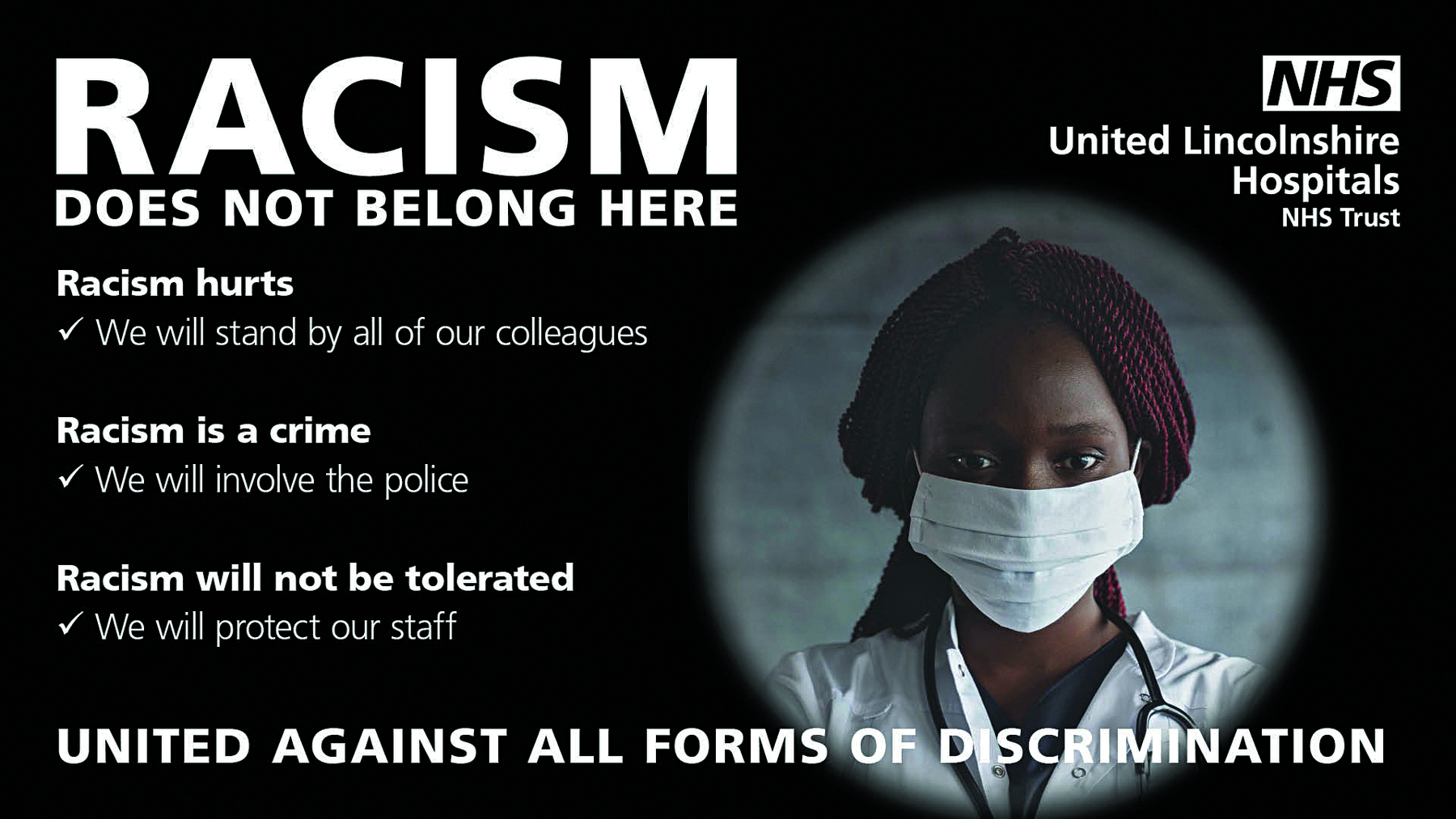
Respostas e comentários
Going further. Respostas pessoais. Espera-se que, além das informações obtidas por meio da pesquisa, os ou as estudantes mobilizem aspectos da discussão da atividade 2 ao refletir sôbre racismo e violência.
3. a) II, III
3. b) I, III
3. c) I, III
fóra de sala de aula
professor ou professora, se possível, mencionar alguns filmes que retratam situações de desrespeito aos seres humanos e pedir aos ou às estudantes que citem outros filmes que abordem esse tema. Pode ser interessante sugerir os filmes Invictus (2009, livre), The Help (2011, 12 anos), Selma (2015, 14 anos) e Crash – No limite (2005, 14 anos). Informações sobre esses filmes encontram-se a seguir.
Invictus: conta a história da luta de Nelson Mandela para unir o povo da África do Sul por meio do esporte.
The Help: relata a história de uma escritora nos anos 1960 que busca retratar o movimento em defesa dos direitos civis por meio dos relatos de empregadas domésticas negras.
Selma: narra a luta de Martin Luther King Júnior por direitos iguais de voto entre os estadunidenses, em especial durante sua marcha de Selma a Montgomery, nos Estados Unidos, em 1965.
Crash – No limite: retrata a vida de habitantes da cidade multicultural de Los Angeles, nos Estados Unidos, em meio a situações de preconceito e discriminação.
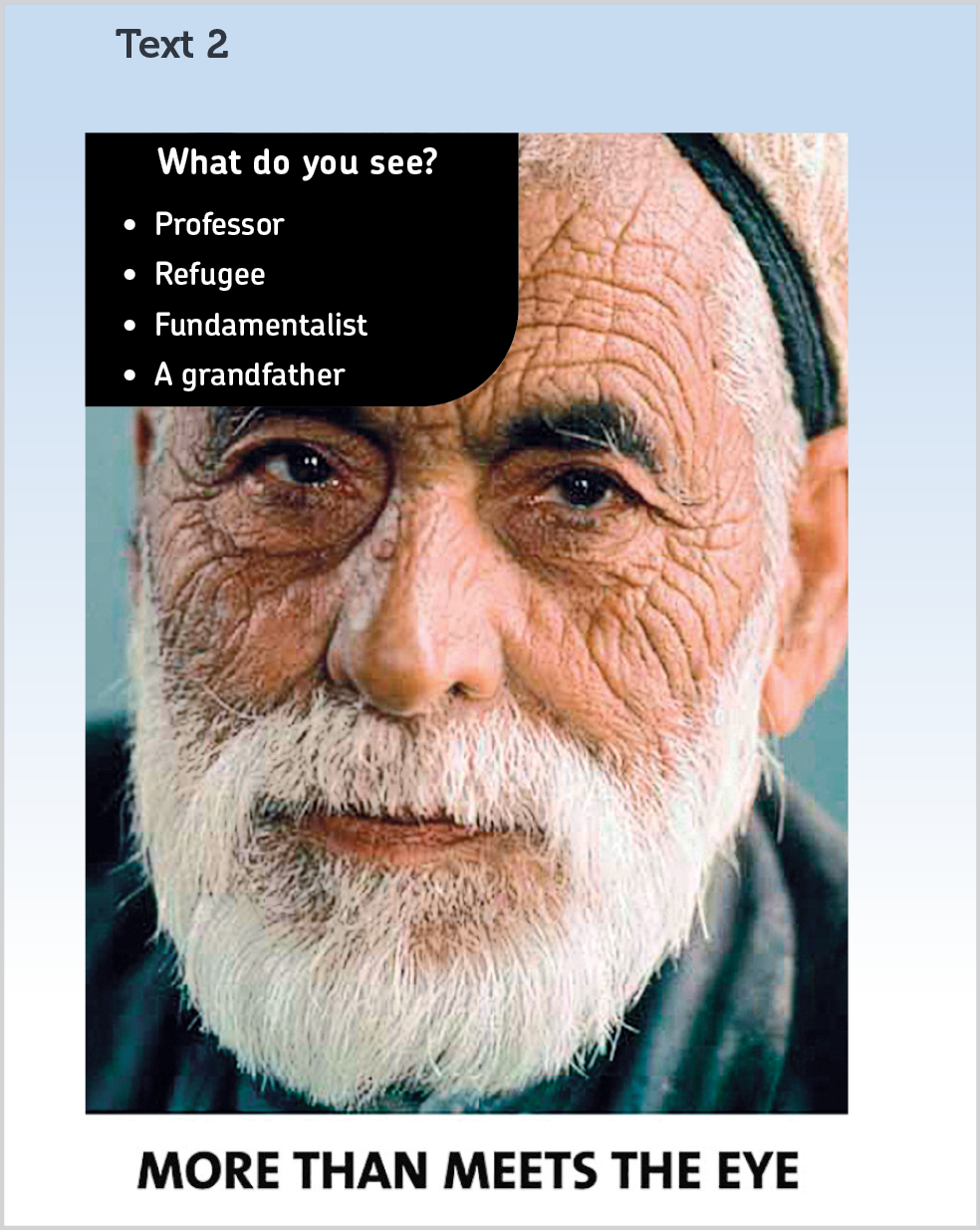
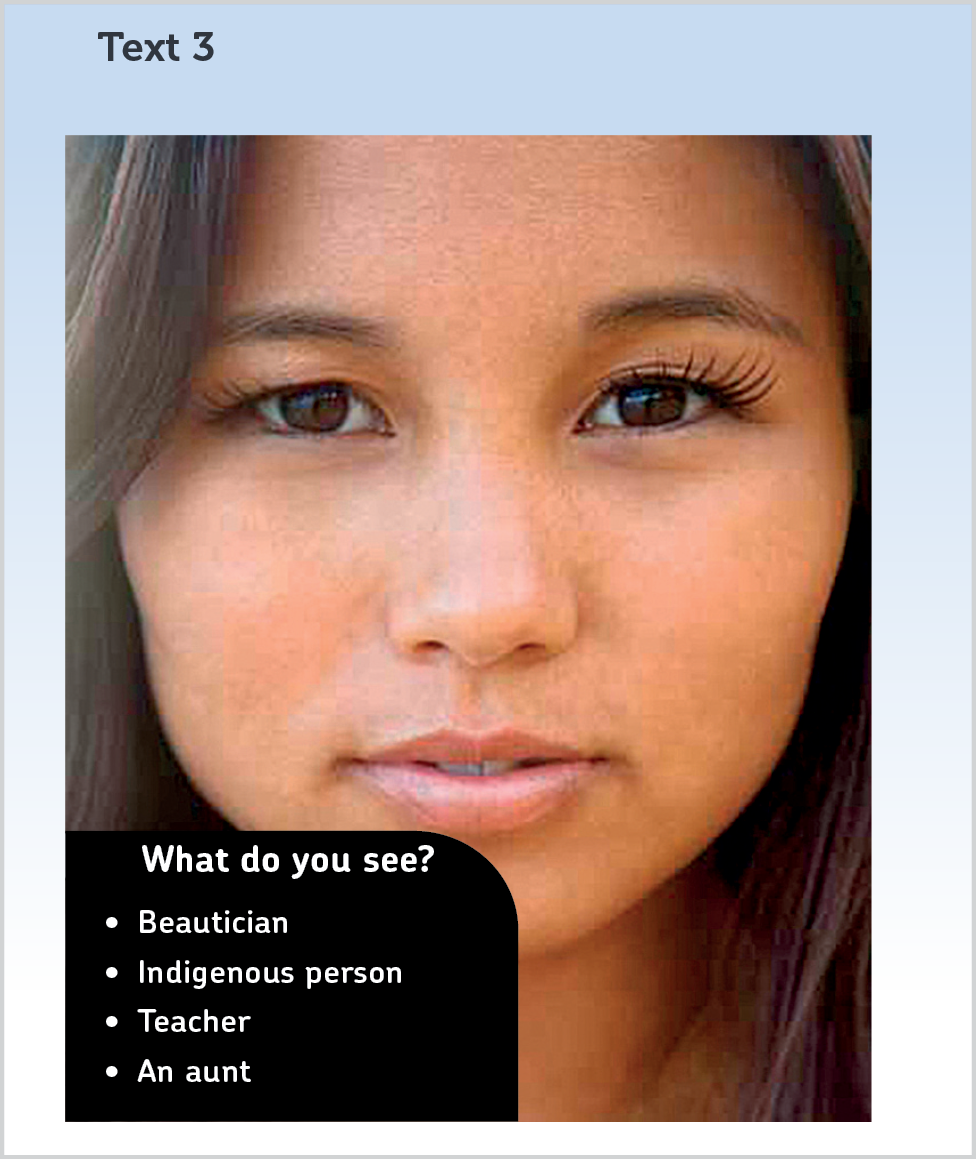
- Who are the people suffering prejudice in the campaigns?
- Based on what you read and discussed previously, why do you think these campaigns are important?
- Write in your notebook only the true statements about Texts 1, 2 and 3.
- Text 1 shows a campaign from a place where discrimination is not accepted.
- Text 1 shows a campaign from a place where discrimination is accepted.
- Texts 2 and 3 suggest that people are more than the labels they receive.
- Only text 2 suggests that people are more than the labels they receive.
- Only text 3 suggests that people are more than the labels they receive.
- Text 1 states that race discrimination is against the law.
- Text 2 states that race discrimination is against the law.
- Text 3 states that race discrimination is against the law.
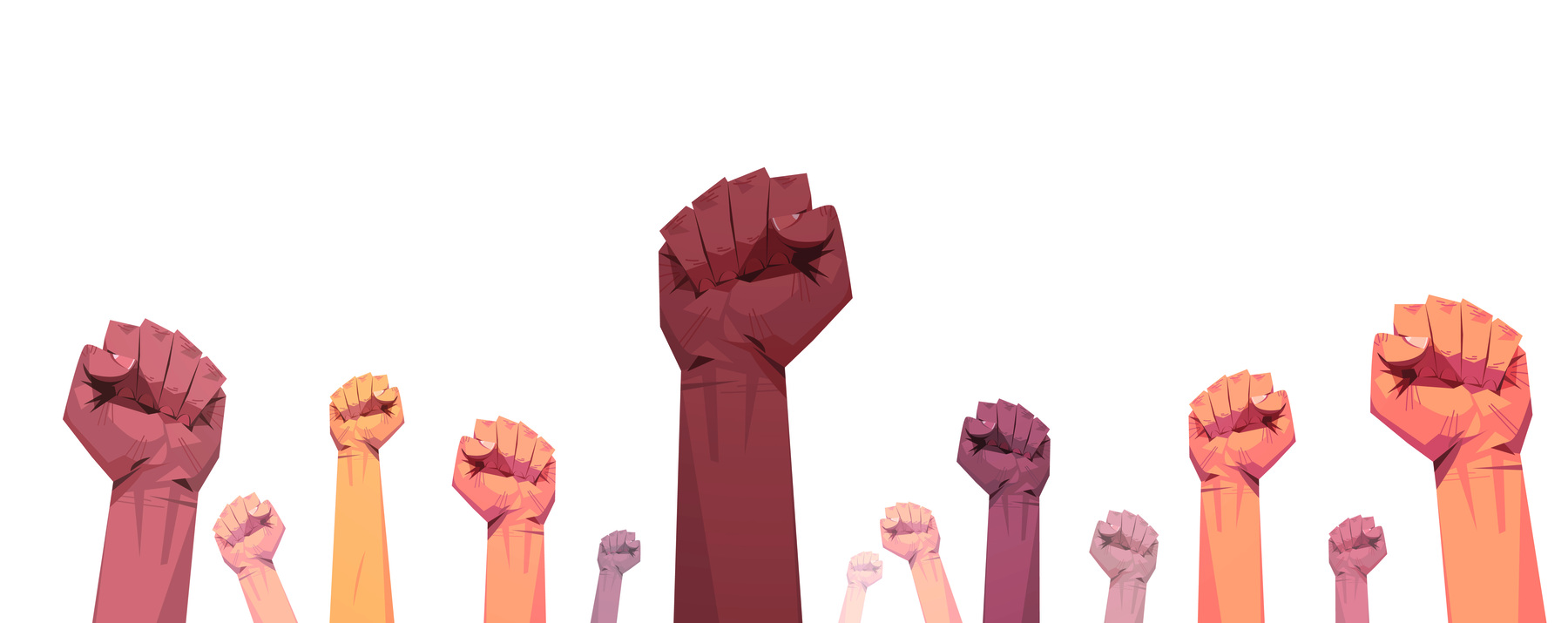
Respostas e comentários
4. a) Resposta possível: Black people, Middle Eastern people and Indigenous people.
4. b) Respostas pessoais. Ver Notas.
5. Repostas: As frases verdadeiras são a, c, f.
Notas
Atividade 4
b professor ou professora, espera-se que os ou as estudantes percebam a importância de desconstruir o racismo ainda presente na sociedade. As campanhas mostram como pessoas de diferentes etnias e origens são, muitas vezes, consideradas inferiores e estereotipadas.
- Read the campaign texts again and check the appropriate answers in your notebook. Work in pairs. There may be more than one appropriate answer.
- According to campaign text 1, it is possible to say that ◆
- black and white people are not treated the same way in that place.
- only race discimination will not be tolerated in that place.
- the company will not support all its employees.
- Campaign texts 2 and 3 suggest that ◆
- stereotypes are not bad for people’s self-esteem.
- people can be wrong about other people’s appearances.
- people can know who a person is just by looking at them.
- It is possible to say that ◆
- some campaign texts want to convince their readers to buy a product.
- all campaign texts intend to convince their readers of something.
- not all campaign texts have the same intention.
- According to campaign text 1, it is possible to say that ◆
- Read the questions and discuss them with a classmate.
- What is the strategy used in campaign text 1 to persuade the readers to reflect on racial inequality?
- How do campaign texts 2 and 3 try to persuade their readers to fight against racism?
Going further
Have you ever heard of the Apartheid in South Africa? Work in groups and research this extinct policy. Research other examples of racism all over the world, including Brazil.
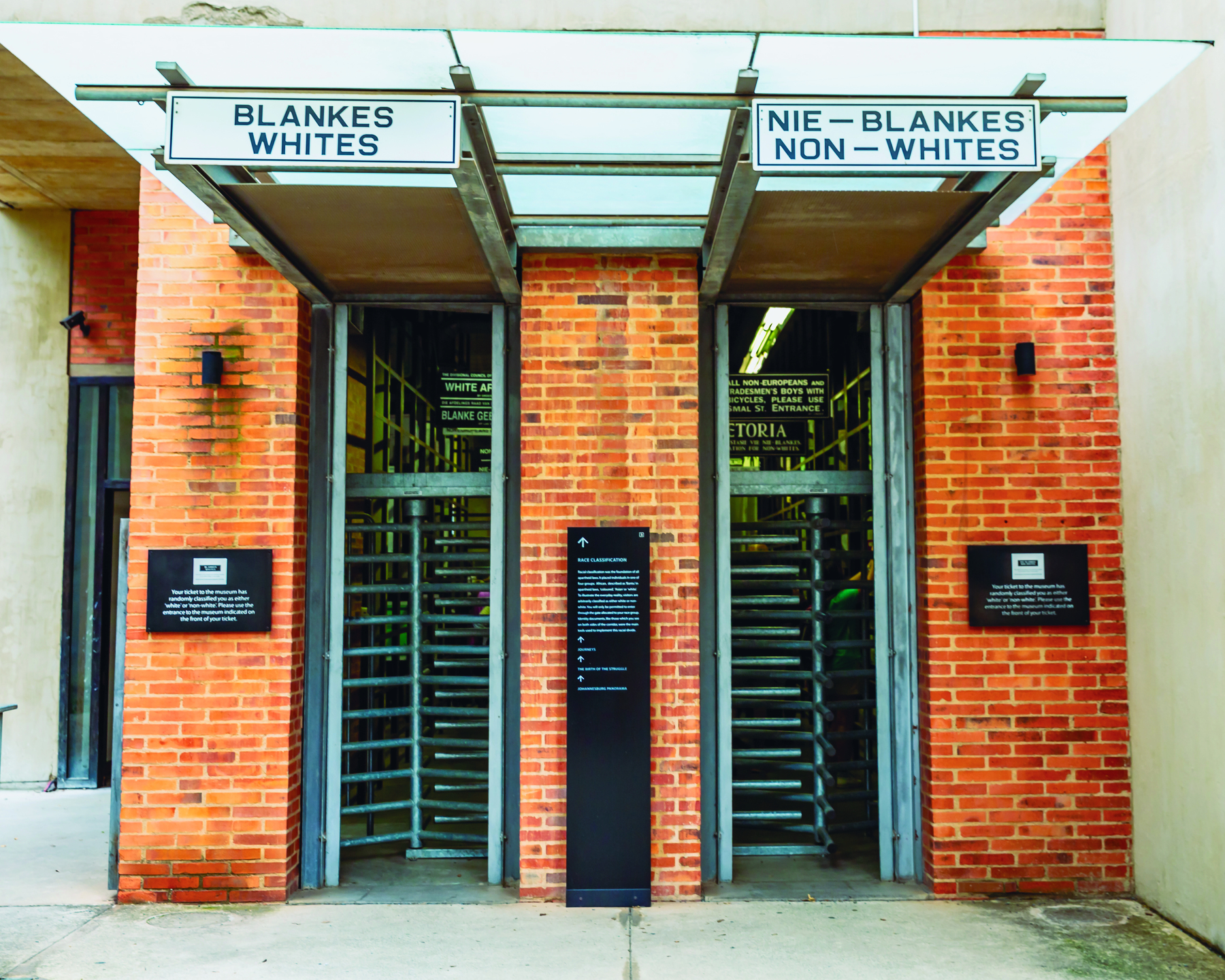
Post-reading
- Discuss these questions with your classmates.
- Why do you think people say racist things? In your opinion, how can someone stop being racist?
- Do you think that the information mentioned by the first campaign is true only in Malaysia? Which racist attitudes can you notice in Brazil?
- Campaign texts 2 and 3 mention some stereotypes people may use when considering other people. Have you ever stereotyped someone? Has anyone treated you stereotypically? How did that make you feel? Why can stereotypes be deceiving?
Respostas e comentários
6. a) um.
6. b) dois.
6. c) dois.
7. Ver Notas.
7. a) Respostas possíveis: The campaign uses only two colors: black and white. The slogan of the campaign says “RACISM DOES NOT BELONG HERE” in capital letters and clearly says that racism is a crime and that they will involve the police.
7. b) Respostas possíveis: Both texts belong to a campaign entitled “More than meets the eye.” They show the pictures of a man who has Middle Eastern traits and a woman who has Indigenous traits and the question “What do you see?” with multiple-choice answers presenting words that people might use to describe these two people. The name of the campaign seems to show that we have to look beyond physical appearances and possible stereotypes.
Going further. Ver Notas.
8. Respostas pessoais. Ver Notas.
Going further
professor ou professora, pode ser pertinente pedir aos ou às estudantes que busquem mais detalhes sobre o período conhecido como Apartheid, na África do Sul, além de outros períodos de segregação racial ao redor do mundo. Pedir que tentem explicar a imagem apresentada no boxe, que traz duas placas: em uma se lê “apenas brancos”; na outra, “não brancos”. Pode ser importante solicitar uma pesquisa sobre a heterogeneidade encontrada na sociedade da África do Sul, que, também por esse aspecto, é bastante parecida com a brasileira.
Notas
Atividade 7
Professor/a, comentar com os ou as estudantes que o primeiro texto da atividade 4 pertence a uma campanha; já o segundo e o terceiro fazem parte de uma mesma campanha. Chamar a atenção deles ou delas para os recursos de persuasão que foram utilizados nessas campanhas, como a escolha de palavras, as cores de fácil visualização e as imagens de impacto, além da escolha das fontes em cada campanha. Sugere-se pedir que expliquem qual é a relação entre o título do primeiro texto e a imagem que mostra uma enfermeira negra de máscara. Já em relação ao segundo e ao terceiro textos, perguntar se sentiram falta de mais texto escrito para compreender a mensagem da publicação e de que forma a ideia da campanha é transmitida por meio das imagens e legendas. Pode-se perguntar por que elas apresentam alternativas que parecem poder ser preenchidas por quem as lê. Além disso, os ou as estudantes podem refletir sobre o motivo de as alternativas não estarem preenchidas e o que isso significaria na composição da campanha.
Atividade 8
professor ou professora, se possível, incentivar os ou as estudantes, por meio das questões, a refletir sobre si mesmos ou mesmas a fim de verificar possíveis atitudes racistas que eles ou elas possam apresentar, ainda que de maneira involuntária. Cabe mencionar que o objetivo não é o julgamento das atitudes mencionadas, mas possibilitar que todos ou todas possam fazer autoavaliações em busca de uma postura mais igualitária e respeitosa. É importante que se sintam confortáveis com esse tema e que comentem suas vivências, enfatizando a forma como as vítimas de uma atitude ou comentário racista se sentem.
lenguage in iusi uon
Prézent simpouversuspésti simplôl versusprésenti - pãrfécti
1. Read the posters and answer the questions in your notebook.
téquist uán
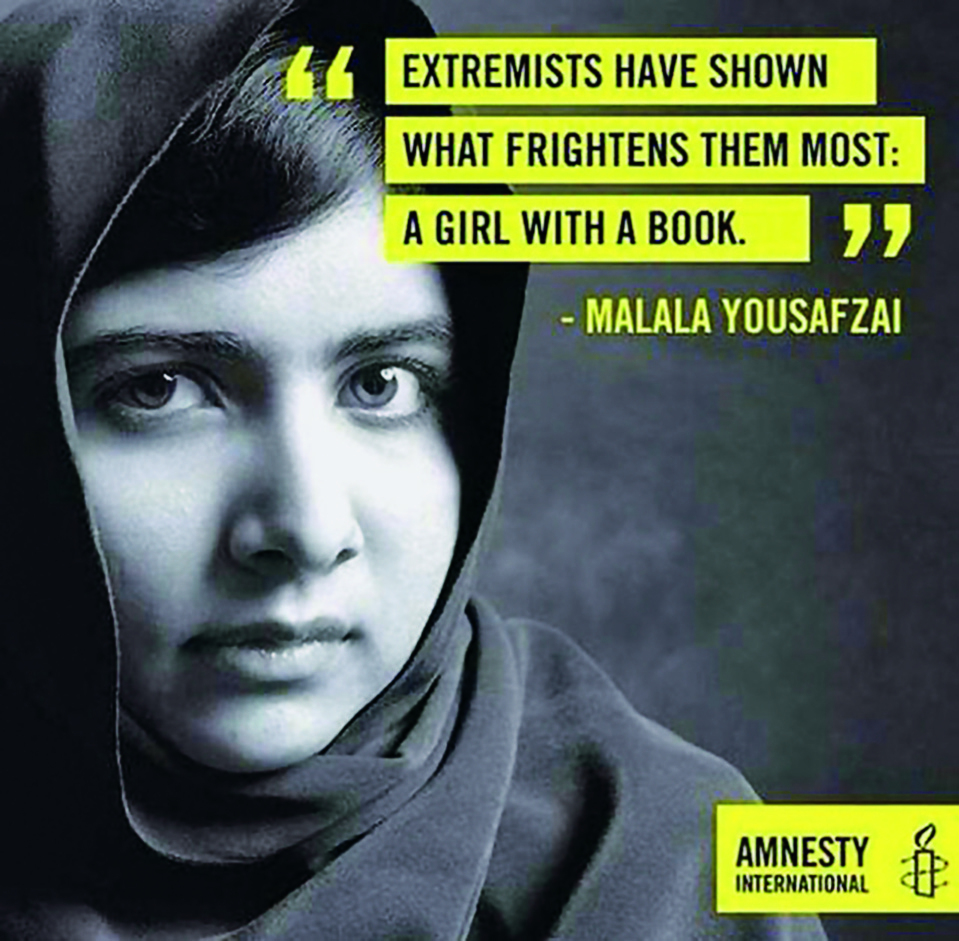
téquist tchú

- Do you recognize the girl on the first poster? In your opinion, why would some people fear a girl with a book?
- Why do you think the woman in the second poster affirms she has suffered racism? In which situations does racism happen in Brazil?
c. How do you think people would react if these posters were displayed at your school? Explain.
Respostas e comentários
1. Respostas pessoais. Ver Notas.
Language in use 1
Esta seção tem por finalidade dar continuidade à discussão sobre racismo, além de abordar o sexismo, retomando o gênero campanha não publicitária e trazendo textos que possibilitem a ampliação da discussão. Com base na exploração da temática, a seção propõe uma revisão dos seguintes tempos verbais: present simple, past simple, present perfect. Espera-se que os ou as estudantes consigam comparar e contrastar os diferentes usos de cada tempo verbal de maneira significativa.
Notas
Atividade 1
professor ou professora, o primeiro pôster foi veiculado na internet em 11/10/2018 pela Anistia Internacional em virtude do Dia Internacional da Menina, uma data comemorativa iniciada pela Organização das Nações Unidas em 2012. Ele apresenta Malala Yousafzai, ativista paquistanesa que trabalha em defesa dos direitos humanos das mulheres e do acesso à educação. O segundo pôster fez parte de uma campanha de 2018 contra o racismo em um distrito escolar no Canadá.
- Read the sentences and choose the appropriate alternative in your notebook.
- In the first poster of activity 1, the sentence “Extremists have shown what frightens them most” espaço para resposta.
- refers to a fact that started in the past and has a consequence now
- refers to an event that is finished
- In the second poster, the sentence “aihave felt racism.” espaço para resposta.
- expresses an event that happened once in the past
- expresses an experience the person has had
- In the question “hév you?” from the second poster, the person in it espaço para resposta.
- asks the reader about an experience he ór she might have had
- asks the reader about an event of the past that has finished
- Based on the sentences in both posters, it is possible to conclude that the present perfect can be used to espaço para resposta
- refer to routines in the past and to specify when an action happened in the past
- refer to facts that started in the past and have a consequence now and to state an experience somebody might have had in his ór herláife
- The structure of the present perfect is espaço para resposta.
- subject + auxiliary havebarrahas + main verb in the past participle + complement
- subject + main verb in the past + complement
- In the first poster of activity 1, the sentence “Extremists have shown what frightens them most” espaço para resposta.
- Now, read these excerpts from the “Reading” section and answer the questions in your notebook.
Excerpt 1
“King charged he was beaten and choked by the arresting officers. Police denied the charges. 1958.”
SPELTZ, Mark. How Photographs Define the Civil Rights and Black Lives Matter Movements. Time, 22 setembro 2016. Disponível em: https://oeds.link/J3c3Wf. Acesso em: 10 junho 2022.
Excerpt 2
“Photography played an important role in advancing the struggle for justice and equality. Compelling pictures on front pages of newspapers and in glossy news magazines raised awareness of the burgeoning movement, while others shocked the nation.”
SPELTZ, Mark. How Photographs Define the Civil Rights and Black Lives Matter Movements. Time, 22 setembro 2016. Disponível em: https://oeds.link/J3c3Wf. Acesso em: 10 junho 2022.
- Which excerpts rifers ou rifr to an action in the past that is finished?
- Which excerpt rifers ou rifr to an event in the past by specifying when the action happened?
- Which verbs are used in the past simple in the excerpts? Are they regular or irregular verbs?
d. Look at the posters from activity 1 again and compare them with the excerpts in activity 3. Why can’t we use the present perfect instead of the past simple in the sentences in activity 3?
Respostas e comentários
2. Ver Notas.
2. a) um. Ver Notas.
2. b) dois.
2. c) um.
2. d) dois.
2. e) um.
3. Ver Notas.
3. a) Excerpts 1 and 2.
3. b) Excerpt 1.
3. c) The verbs used are “charged”, “denied”, “played”, “raised” and “shocked.” They are regular verbs.
3. d) Respostas possíveis: The sentences in activity 1 are statements about something that happened in the past and still have an impact in women’s lives because they still may deal with the consequences of extreme sexism or racism. The sentences in activity 3 show actions in the past that are finished. Excerpt 1 specifically mentions when the action happened (1958). While the past simple can indicate when an action took place, the same does not occur with the present perfect.
Acompanhando a aprendizagem
professor ou professora, se desejar reforçar o trabalho com a pronúncia dos verbos no passado, pedir aos ou às estudantes que experienciem pronunciar os verbos no infinitivo, prestando atenção à presença ou ausência de uma vibração na garganta durante o último som pronunciado. Separar os verbos em duas categorias. Então, pedir que pronunciem os verbos com -ed final, orientando-os/as a pronunciar um “t” quando não há vibração na garganta e um “d” quando há vibração.
Notas
Atividade 2
professor ou professora, ao trabalhar esta atividade, espera-se que os ou as estudantes percebam os momentos em que o present perfect pode ser utilizado, já que se trata de um tempo verbal que não possui equivalência na língua portuguesa.
a professor ou professora, antes de responder ao item “a”, perguntar aos ou às estudantes o que eles ou elas se lembram sobre a história de Malala. Em 2012, aos 15 anos de idade, a menina paquistanesa sofreu um atentado à sua vida por extremistas islâmicos por frequentar a escola. Comentar que é preciso ter cuidado com estereótipos ao refletir sobre extremistas, pois o extremismo ocorre em diversos contextos, não apenas no religioso.
Atividade 3
professor ou professora, esta atividade busca contrastar os usos do past simple e do present perfect. Espera-se que os ou as estudantes percebam que, enquanto o past simple expressa uma ação terminada e geralmente localizada no tempo, o present perfect se refere a algo que ocorreu no passado distante ou recente, mas que, geralmente, tem um impacto ou uma consequência no presente.
b Para essa atividade, o tempo verbal utilizado no texto 2 é o present simple. As frases referem-se a ações que se repetem no presente e que são parte da rotina. O present simple não poderia ser aplicado nas frases do texto 1 porque ele refere-se a eventos que se iniciaram no passado e que continuam ou ainda são verdade no presente.
4. Read the comic strip. Then answer the questions in your notebook and share your answers with a classmate.

- What is the main critique of the comic strip? Do you think the criticism in it still applies to the current context?
- Which aspect of the comic strip gives credibility to the argument defended in it?
- In the sentence “In 1978, the average budget for intercollegiate athletics for men was $717,000, but for women it was only $141,000”, which verb tense is used? Explain why.
5. Now read the excerpts from a book about racism in the United States and answer the questions with a classmate. Use your notebook.
téquist uán
“Americans are agents of racism, then, because their country has been racist since its colonial beginnings.”
FAIR, Brian K. Notes of a Racial Caste Baby: Color Blindness and the End of Affirmative Action. Nova York: en uai iu Press, 1999.
téquist tchú
“We shop at stores that hire virtually no blacks. We send our children to schools that we know are better than those available to most blacks and other racial minorities.”
FAIR, Brian K. Notes of a Racial Caste Baby: Color Blindness and the End of Affirmative Action. Nova York: en uai iu Press, 1999.
- Text 1 comments on the historical essence of racism in the u ésse In your opinion, can the historical past of a country contribute to the passing of racist thoughts from generation to generation? Explain.
- In text 2, the author mentions a few racist attitudes incorporated in white people’s lives in the u ésse Do you think white people in your country act similarly toward black people or other minorities? Explain.
- In text 1, the author recalls something from the past that has caused an impact in people’s lives nowadays. Which event does he refer to? What is its impact on society now?
- In text 2, the verb tense used is not the same as in the sentence “their country has been racist since its colonial beginnings,” from text 1. Which verb tense is used in text 2? Why isn’t it the same as the one in the other text?
- Now, read the book excerpts again and complete the sentences.
- In text 1, the verb highlighted is in the espaço para resposta tense.
- In text 1, been is the past participle of the verb espaço para resposta.
- If the subject in text 2 were heór xi, the conjugation of the verbs highlighted would be espaço para resposta, espaço para resposta, espaço para resposta ênd espaço para resposta.
Versão adaptada acessível
Atividade 5, item e
Now, read the book excerpts again and complete the sentences.
I In text 1, the verb "das been" is in the <espaço para completar> tense.
II In text 1, been is the past participle of the verb <espaço para completar>.
III If the subject in text 2 were he or she, the conjugation of the verbs "shop", "hire", "send", "know" would be <espaço para completar>, <espaço para completar>, <espaço para completar> and <espaço para completar>.
Respostas e comentários
4. a) Ver Notas.
4. b) In the third frame, the girl mentions statistics saying that female intercollegiate athletes didn’t receive as much financial incentive as men in 1978.
4. c) Respostas possíveis: The past simple is used because the sentence presents data from the year 1978, which has probably changed since then. It introduces an event that was true for some time in the past.
5. Ver Notas.
5. a) Respostas pessoais. É possível retomar dados das atividades anteriores para incentivar a reflexão sôbre o assunto.
5. b) Respostas possíveis: The author mentions that people shop at stores where no black people are hired, and parents tend to send their children to schools which are considered better than the ones black people are sent to.
5. c) Resposta possível: The event from the past is the time of colonialism in the u ésse, when black people were enslaved and used to be considered inferior to white people. It is said that because of such colonial roots Americans are still agents of racism nowadays.
5. d) Ver Notas.
5. e) um: present perfect.
5. e) dois: to be.
5. e) três: shops; hires; sends; knows.
Notas
Atividade 4 a Para essa atividade, os ou as estudantes podem ressaltar que a tirinha evidencia a desigualdade de gênero no esporte, uma vez que mulheres muitas vezes não são tão valorizadas quanto os homens. No contexto atual, podemos citar as diferenças de remuneração em modalidades masculinas e femininas, como futebol e vôlei.
Atividade 5
professor ou professora, esta atividade busca contrastar os usos do present simple e do present perfect. Espera-se que os ou as estudantes percebam que o present simple é usado em inglês para falar sobre rotinas ou fatos, enquanto o present perfect é utilizado para falar sobre ações que começaram em determinado momento do passado e continuam até o presente.
Acompanhando a aprendizagem
professor ou professora, a fim de oferecer um desafio aos ou às estudantes que assim desejarem, pode ser interessante pedir a eles ou elas que procurem exemplos de textos em que os tempos verbais revisados na unidade sejam explicados por meio das situações de uso. Assim, os ou as estudantes com maior facilidade neste tópico podem aprofundar seus conhecimentos e compartilhá-los com os ou as demais colegas, enquanto aqueles ou aquelas que encontrarem mais dificuldade podem compreender os contextos de uso de cada tempo verbal estudado até então.
lenguage in iusi tchu
Connectives (linking words)
1. Read these extracts from the book de daiari óf a iãngui guãirl , by Anne Frank (1929-1945). Which topics related to human rights is she discussing? Read the excerpts and match them to the topics in your notebook. Work in pairs.
Extract 1 “You mustn’t get the idea that he’s starving. We found bread, cheese, jam and eggs in his cupboard. It’s absolutely disgraceful that Dussel, whom we’ve treated with such kindness and whom we took in to save from destruction, should stuff himself behind our backs and not give us anything. After all, we’ve shared all we had with him!” (página 77)
Extract 2 “Women should be respected as well! Generally speaking, men are held in great esteem in all parts of the world, so why shouldn’t women have their share?” (página 235)
Extract 3 “‘This is the beginning of the end,’ everyone was saying, but Churchill, the British Prime Minister, who must have heard the same thing being repeated in England, declared, ‘This is not the end. It is not even the beginning of the end. But it is, perhaps, the end of the beginning.’ Do you see the difference? However, there’s reason for optimism. Stalingrad, the Russian city that has been under attack for three months, still hasn’t fallen into German hands.” (página 50)
Extract 4 “I have only one hope: that this anti-Semitism is just a passing thing, that the Dutch will show their true colors, that they’ll never waver from what they know in their hearts to be just, for this is unjust!” (página 224)
FRANK, A. The Diary of a Young Girl. New York: Doubleday, 1995.
- prejudice
- lack of resources
- vár
d. sexism
Going further
The Diary of a Young Girl is a book of the diary kept by Anne Frank between June 12th, 1942 and August nota de rodapé 1st, 1944, a teenage Jewish girl who had to hide during the Nazi occupation in the Netherlands.
2. Look at the highlighted words in activity 1 and, in your notebook, write them next to their corresponding explanations. Work in pairs.
Versão adaptada acessível
Atividade 2
Look at the words "and", "after all", "as well", "so", "but", "however" and "for" in activity 1 and, in your notebook, write them next to their corresponding explanations. Work in pairs.
- One connective that expresses synthesis.
- One connective that expresses an effect or result.
- Two connectives that express addition.
- Two connectives that express contrast.
- One connective that expresses reason.
- In your notebook, identify in each sentence the connective that can be replaced by the one in parentheses. Then check if it can stay in the same position in the sentence.
- “I have only one hope: that this anti-Semitism is just a passing thing, that the Dutch will show their true colors, that they’ll never waver from what they know in their hearts to be just, for this is unjust!” (because)
Respostas e comentários
1. a) 4.
1. b) 1.
1. c) 3.
1. d) 2. Ver Notas.
Going further. Ver Notas.
2. a) after all.
2. b) so.
2. c) and; as well.
2. d) but; however.
2. e) for.
3. a) “For” can be substituted for “because”: “[...] because this is unjust”. “Because” can stay in the same position in the sentence.
Language in use 2
A seção tem por objetivo principal trabalhar a habilidade ê éfe zero nove éle ih um quatro: utilizar conectores indicadores de adição, condição, oposição, contraste, conclusão e síntese como auxiliares na construção da argumentação e intencionalidade discursiva. Para isso, apresenta excertos do livro The Diary of a Young Girl, de Anne Frank, que possibilitam aos ou às estudantes observar algumas linking words em seus contextos de uso. Em seguida, eles ou elas poderão observar outros conectores presentes na unidade e identificar o que expressam na construção da argumentação. Além disso, como a unidade contempla a questão dos direitos humanos, os ou as estudantes poderão discutir os temas abordados nos excertos.
Going further
professor ou professora, a casa em Amsterdam, onde Anne Frank se escondeu com a família do regime nazista e escreveu seu diário, foi preservada e é hoje um museu aberto a visitação. Se julgar pertinente, solicitar aos ou às estudantes que façam uma busca na internet por “Anne Frank House” e explorem o site do museu. Após a pesquisa, pedir a eles ou elas que compartilhem com a turma o que descobriram.
Notas
Atividade 1
d professor ou professora, se necessário, explicar que sexismo é o preconceito ou a discriminação com base no gênero de uma pessoa.
- “Women should be respected as well!” (too)
- “You mustn’t get the idea that he’s starving. We found bread, cheese, jam and eggs in his cupboard.” (as well as)
- “Generally speaking, men are held in great esteem in all parts of the world, so why shouldn’t women have their share?” (therefore)
- “This is not the end. It is not even the beginning of the end. But it is, perhaps, the end of the beginning.” (though)
- “After all, we’ve shared all we had with him!” (all in all)
- “However, there’s reason for optimism. Stalingrad, the Russian city that has been under attack for three months, still hasn’t fallen into German hands.” (yet)
4. Now read the extracts from the “Reading” section. Then check the appropriate option in your notebook.
Extract 1
“Because of this, Americans are less familiar with critical moments of strength, agency and determination.”
Extract 2
“Yet, no matter how important these photographs were and powerful they remain, solely focusing on images of brutality and violence provides an incomplete picture of the era.”
Extract 3
“Photographic coverage conveyed not only the intensity of the struggle but also made the massive resistance to change visible.”
- In extract 1, “because of this” expresses espaço para resposta.
- an addition.
- a conclusion.
- a reason.
- In extract 2, it is possible to replace “yet” with espaço para resposta.
- “however”
- “after all”
- “for”
- Which of these sentences has the same meaning as extract 3?
- Photographic coverage conveyed the intensity of the struggle, but made the massive resistance to change visible.
- Photographic coverage conveyed the intensity of the struggle as well as made the massive resistance to change visible.
- Photographic coverage conveyed the intensity of the struggle, so it made the massive resistance to change visible.
Respostas e comentários
3. b) “As well” can be substituted for “too”: “Women should be respected, too!”. “Too” can stay in the same position in the sentence.
3. c) “And” can be substituted for “as well as”: “reticências jam as well as eggs reticências”ponto “As well as” can stay in the same position in the sentence.
3. d) “So” can be substituted for “therefore”: “reticências of the world. Therefore, why [...]”ponto “Therefore” can’t stay in the same position in the sentence. Ver Notas.
3. e) “But” can be substituted for “though”: “Though it is, perhaps reticências”ponto “Though” can stay in the same position in the sentence.
3. f) “After all” can be substituted for “all in all": “All in all, we’ve shared [...]”ponto “All in all” can stay in the same position in the sentence.
3. g) “However” can be substituted for “yet”: “Yet, there’s reason [...]”ponto “Yet” can stay in the same position in the sentence.
4. a) três.
4. b) um.
4. c) dois.
Notas
Atividade 3
d professor ou professora, é possível também utilizar ponto e vírgula entre as duas partes da oração e uma vírgula após “therefore”: “[…] parts of the world; therefore, why shouldn’t women have their share?”. Outra possibilidade é manter a vírgula entre as duas partes e incluir “and”: “[…] parts of the world, and therefore why shouldn’t women have their share?”.
- Which of these connectives express addition?
- “and”, “as well (as)”, “not onlyreticências but also” and “too.”
- “and”, “all in all” and “too.”
- “and”, “as well (as)” and “this is why.”
- To express reason, it is possible to use espaço para resposta.
- “because”, “however” and “because of this”
- “for”, “so” and “because of this”
- “because”, “for” and “because of this”
- If you want to contrast ideas, you can use espaço para resposta.
- “all in all”, “but”, “though” and “yet”
- “but”, “however”, “though” and “yet”
- “because”, “for”, “though” and “therefore”
- To express an effect or result, it is possible to use espaço para resposta.
- “because” and “therefore”
- “so” and “therefore”
- “so” and “because of this”
- Which of these connectives express synthesis?
- “after all” and “all in all.”
- “as well as” and “all in all.”
- “after all” and “so.”
- Now go back to the excerpts in activity 1. Then discuss these questions with your classmates.
- Excerpt 1 describes a common situation in some countries during the Nazi occupation, when the Jews and other threatened minorities had to hide in order to survive. For this reason, they didn’t have access to many food resources. What are other situations in which people lack resources?
- In the second excerpt, Anne Frank says women were not respected back then. Can you think of examples of women being disrespected? Do you think things have changed nowadays? Why?
- During periods of war, people’s routines and lives may change completely. Do you know of any country that is currently going through a war? Is it possible to do anything to help the people affected by it?
- Excerpt 4 mentions anti-Semitism, which means prejudice against Jews. Do you know other ethnical groups that are discriminated against? What are some actions that can be taken to avoid prejudice?
Going further
Research Nazism and anti-Semitism and take notes about your findings. Share them with your classmates. Based on your research on human rights, discuss why the events that happened during the Nazi regime disrespected them.
Respostas e comentários
4. d) um.
4. e) três.
4. f) dois.
4. g) dois.
4. h) um.
5. a) Respostas possíveis: Extreme poverty, countries in political or economic crisis, places affected by natural disasters, etcétera
5. b) Respostas pessoais. Ver Notas.
5. c) Respostas pessoais. Ver Notas.
5. d) Respostas pessoais. Ver Notas.
Notas
Atividade 5
b professor ou professora, a situação da mulher evoluiu desde a época de Anne Frank. No Brasil, a Constituição Federal de 1988 versa que homens e mulheres são iguais em relação a seus direitos e obrigações. No entanto, ainda há, em diversas instâncias, desrespeito à mulher e violação de seus direitos. Leis como a nº 11.340/2006, conhecida como Lei Maria da Penha, procuram garantir a proteção dos direitos da mulher no país. Como o desrespeito à mulher pode acontecer de forma mais ou menos frequente em determinados locais, é importante considerar o contexto escolar durante a discussão para que a reflexão proposta seja mais relevante para os ou as estudantes.
c professor ou professora, as respostas podem variar conforme o período de utilização do livro. Pode-se explicar que o Brasil é um país que tem tradição na concessão de abrigo e proteção a pessoas perseguidas por motivos políticos, raciais e sociais. O instituto jurídico do refúgio no Brasil é regulado pela Lei nº 9 474/1997, que define os mecanismos para implementação do Estatuto dos Refugiados no Brasil. Quanto a formas de auxiliar pessoas que passam por situação de guerra, pode-se mencionar que elas devem ser tratadas com respeito e igualdade.
d páginarofessor/a, é importante que os ou as estudantes identifiquem os preconceitos que são comuns na comunidade escolar e, por isso mesmo, difíceis de serem percebidos. Pode-se explicar que, durante o regime nazista, para muitas pessoas o preconceito contra judeus não era notado, mas naturalizado. De forma semelhante, outros preconceitos costumam passar despercebidos, por isso é importante desconstruí-los e desnaturalizá-los.
lissenin
ar iu reicisti
Pre-listening
1. Look at the pictures and predict what the audio campaign is going to say. In your notebook, write the option that is the most appropriate in your opinion.

- The sentence “Give nothing to racism” suggests that espaço para resposta
- people should not do anything that might help racism grow.
- people should not worry about racism.
- people should not be angry or sad when they hear racist comments or see racist attitudes.
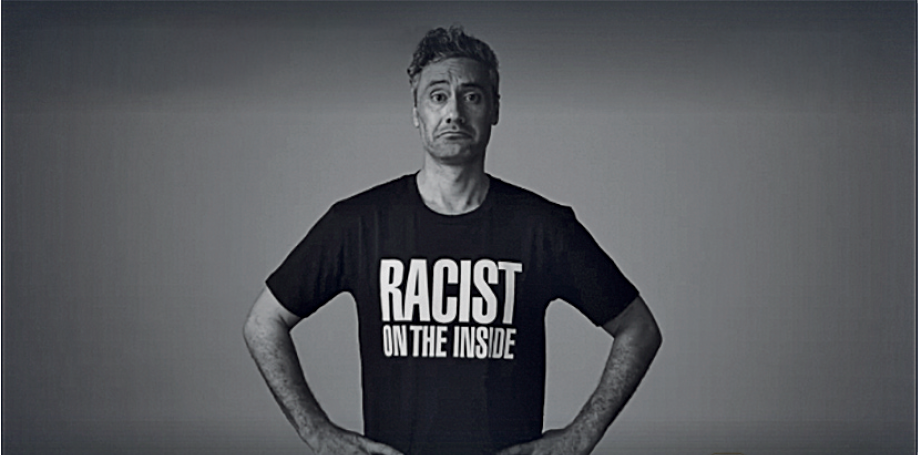
- According to this picture, it is possible to think that the audio is going to mention espaço para resposta
- significant racist attitudes.
- people who fight racism.
- small and hidden attitudes of racism.
Listening
2. Listen to the audio campaign. Then writetí(true) or éf (false) in your notebook. Work in pairs.

Clique no play e acompanhe a reprodução do Áudio.
- The audio is an ironic campaign that explains how to be a racist person.
- Small actions like a smile, a cheeky giggle, even a simple nod in agreement are not considered racism.
- The man is asking for everyone’s help to stop racism.
- The campaign shows its irony and criticism when it says that a society with no racism would not be a nice world for our children.
- The campaign suggests that even small acts of racism can help make racism survive and grow.
- The man presenting himself as “New Zealander of the year” is ironic if we consider his message about racism.
- According to the audio, we cannot change our society with our small actions.
- The man suggests that people who are racist only on the inside do not contribute to his campaign.
i. The campaign suggests that people have to question their actions and think about what they can do to stop racism.
Respostas e comentários
1. a) um. Ver Notas.
1. b) três. Ver Notas.
As legendas das fotografias foram suprimidas do livro do estudante para fins didáticos. Primeira imagem: campanha de conscientização contra o racismo da Human Rights Comission, Nova Zelândia, 2017; Segunda imagem: campanha de conscientização contra o racismo da Human Rights Comission, Nova Zelândia, 2017.
2. Ver Notas.
2. a) T; 2. b) F; 2. c) F; 2. d) T; 2. e) T; 2. f) T; 2. g) F; 2. h) F; 2. i) T.
Notas
Atividade 1
a professor ou professora, o objetivo da atividade é permitir um levantamento de hipóteses sobre o primeiro áudio que os ou as estudantes ouvirão.
b professor ou professora, pedir aos ou às estudantes que observem a imagem do homem vestindo uma camiseta com a frase: “Racist on the inside” (“Racista por dentro”). Pedir que comentem o que acham que essa frase significa, com base, principalmente, nas alternativas. Caso escolham a alternativa “três”, solicitar que deem exemplos sobre “pequenos” e ocultos atos racistas.
Atividade 2
professor ou professora, no início do áudio, o ator/diretor neozelandês Taika Waititi endereça sua fala a “every one of my fellow Kiwis”. Comentar com os ou as estudantes que “Kiwi” é uma palavra usada para se referir aos neozelandeses. Essa palavra é usada porque “kiwi” é o nome do pássaro que é o símbolo do país.
Listening
Esta seção traz dois áudios diferentes e que abordam a questão do racismo. O primeiro apresenta uma campanha não publicitária, aparentemente racista, em que seu divulgador defende a manutenção do racismo. No entanto, ao longo do discurso, o divulgador exibe o caráter crítico, reflexivo e irônico da campanha. Sua intenção é simular argumentos para se tornar um racista, levando quem ouve a se chocar com uma campanha a favor desse preconceito. Assim, busca-se permitir aos ou às estudantes que reflitam sobre pequenos atos de racismo que podem presenciar ou até mesmo cometer, de forma consciente ou não. O segundo áudio apresenta a questão do racismo sob a perspectiva de pessoas com deficiência visual, ou seja, que não são capazes de distinguir a cor ou a etnia de uma pessoa com o auxílio da visão. Dessa forma, busca-se levar os ou as estudantes à reflexão sobre as possíveis causas do racismo e do preconceito em geral. O posicionamento de cada participante do áudio pode contribuir para uma discussão aprofundada e séria sobre a questão. A seção tem por objetivo trabalhar a habilidade ê éfe zero nove éle ih zero dois: compilar as ideias-chave de textos por meio de tomada de notas; em especial, trabalha-se a habilidade ê éfe zero nove éle ih zero três: analisar posicionamentos defendidos e refutados em textos orais sobre temas de interesse social e coletivo.
Transcript: Are you racist? – Important Cause
professor ou professora, devido à limitação de espaço, a transcrição se encontra nas páginas 191.
Transcript: Are you racist? – Statements
professor ou professora, devido à limitação de espaço, a transcrição se encontra na página 191.
3. During the audio, some people ask questions about how they can contribute to the campaign. Listen again and match each question to the answers given.

Clique no play e acompanhe a reprodução do Áudio.
- “But I’m not a real racist. Can I still help?”
- “How do I spread the word?”
- “What’s in it for me?”
- “If I only give a little bit, will it even make a difference?”
- “How do I show my support?”
- “Ah, nothing. There’s no benefit whatsoever to being racist. But ask yourself: what if everyone stopped giving to racism? What kind of future would that be for our children?”
- “Not to you, no. But to the people receiving the racism, they’ll be getting hundreds of small bits every day, so it will add up. It will be noticed.”
- “Of course. Even if you don’t come from a racist background, that’s okay. Being a bit racist is super easy.”
- “You don’t actually have to talk people into it. Just be a bit racist and they’ll feel the social pressure to follow along.”
- “You might not want to wear a T-shirt that says how much of a racist you are. reticências But you can laugh at racist comments. It does the same thing.”
4. Some visually-impaired people were asked if they were racist. Listen to their answers and comments. Then complete the chart in your notebook.

Clique no play e acompanhe a reprodução do Áudio.

|
Are you racist? |
Arguments |
|
|---|---|---|
|
Woman 1 |
||
|
Man 1 |
||
|
Man 2 |
||
|
Woman 2 |
||
|
Man 3 |
Post-listening
- Discuss these questions with your classmates.
- Analyze the transcript of the campaign on pages 190-191. What is the strategy used by the man to persuade people to stop racism?
- Do the visually-impaired people in the second audio have different opinions about how they react to racism? Based on their opinions, can you say racism is not only related to what we see?
- How do you deal with differences, such as race or origin? Do you think you consider people’s background or appearance when choosing to relate with them? Why?
- If you had to answer the question in the second audio, what would you say?
- Do you think that even small racist acts can make racism grow? How could we stop racism? Give examples.
Respostas e comentários
3. Ver Notas.
3. a) três 3. b) quatro 3. c) um 3. d) dois 3. e) V.
4. Ver Notas.
5. a) Respostas possíveis: He uses irony by mentioning racism as something that needs to survive. In order to do that, he describes how racism works so that people consider their actions.
5. b) Yes, people have different opinions. Man 1, Man 2 and Woman 2 seem to think that being blind frees people from being racist, but Woman 1 and Man 3 think that visually-impaired people can be racist, since it doesn’t depend only on what people see or not. Respostas pessoais.
5. c) Respostas pessoais. Sugere-se observar se os ou as estudantes compreendem que o racismo está presente no cotidiano e, muitas vezes, é imperceptível a quem reproduz atitudes desse tipo.
5. d) Respostas pessoais. Se possível, retomar brevemente as discussões sobre discriminação a partir de estereótipos.
5. e) Respostas pessoais. os ou as estudantes podem mencionar atitudes antirracistas individuais e coletivas.
Notas
Atividade 1
professor ou professora, pedir aos ou às estudantes que mencionem alguns direitos humanos que eles ou elas já conheçam e sugerir que pesquisem mais sobre o tema, caso precisem compreendê-lo melhor. Se julgar necessário, apresente alguns direitos que não foram mencionados pela turma e escrevê-los no quadro.
Atividade 3
professor ou professora, ao lidar com esta questão, mencionar a existência de um termo chamado FAQ, utilizado em páginas da internet e que significa frequently asked questions (perguntas que são feitas com certa frequência), que têm respostas prontas em uma página do site em questão, para que os ou as visitantes com aquelas dúvidas possam saná-las sem ter de repetir as perguntas. Pedir aos ou às estudantes que comentem a ironia e a crítica por trás dessa “campanha” às avessas. Perguntar se eles ou elas acham que o tipo de preconceito mencionado no áudio é pouco ou muito frequente na sociedade e se ele pode estar presente em nós mesmos ou mesmas. Se julgar oportuno, pedir a eles ou elas que levantem situações em que podem ter sido racistas, ainda que sem a intenção de sê-lo.
Atividade 4 Resposta:
Woman 1: Yes./She thinks she is racist because she thinks every white person is racist. She participates in institutions that benefit from capitalism, which was built on slavery and racism. Seeing someone’s skin color is not the only way we differentiate people’s culture or race.
Man 1: No./He says blind people don’t ask about people’s race and one person only found out he was black because he was asked by him.
Man 2: No./Blindness does sometimes take those racial cues out of society, because if you can’t tell by someone’s voice or accent or whatever, you have no idea about the person’s race.
Woman 2: No./Because she can’t see.
Man 3: Yes./He would like to think that he is not, but there are stereotypes that have been instilled into everyone. He says he can pick dialects and try to associate them with what race the people may be. If they use slang or vulgar language, he sometimes thinks they are black people.
ispíquin
Discussing human rights
Pre-speaking
- Get into groups. Which human rights do you know? Do some quick research and take notes in your notebook.
- Look for photojournalism articles that deal with one of the human rights you researched. Decide on one article your group is going to discuss.
- Individually, think about how the article and the pictures representing the chosen human right. Is the article criticizing a specific situation? Is it showing another perspective on a theme that is usually represented in a specific way? Is it against human rights? What would you change in it? Go over the unit and look for vocabulary and linking words to connect your ideas. Also, use examples of facts and experiences to make your point. Review the verbs in the past in “Language in use 1” if necessary. Take notes in your notebook.
- If necessary, use figures, graphs, interviews and other information in order to support your argument.
Speaking
- Now you are going to discuss the article with your group. Follow the instructions.
- Present your arguments and make sure to use the linking words you have learned.
- Listen to other people’s arguments and, if necessary, take notes on their opinions so you can discuss them later.
- Make sure you and your classmates are polite and respectful during the discussion. Remember: you are debating ideas, and each person can have different points of view.
- Try to come to a consensus on the topic.
Useful language
I believereticências
In my opinion,reticências
Based onreticências
I agree becausereticências
I’m sorry, but I have to disagree with you becausereticências
Post-speaking
- Discuss these questions with your classmates.
- In your opinion, was the discussion polite and respectful? Why (not)?
- Do you think the discussions were useful to learn more about human rights and to defend and promote them?
- What did you learn from the discussions?
Respostas e comentários
1. Ver Notas.
2. Ver Notas.
3. Respostas pessoais.
4. Ver Notas.
6. Respostas pessoais. Ver Notas.
Speaking
Esta seção tem por objetivo desenvolver as habilidades ê éfe zero nove éle ih zero um: fazer uso da Língua Inglesa para expor pontos de vista, argumentos e contra-argumentos, considerando o contexto e os recursos linguísticos voltados para a eficácia da comunicação e ê éfe zero nove éle ih zero quatro: expor resultados de pesquisa ou estudo com o apoio de recursos, tais como notas, gráficos, tabelas, entre outros, adequando as estratégias de construção do texto oral aos objetivos de comunicação e ao contexto. É esperado que os ou as estudantes, neste momento, se posicionem sobre algum evento/fato relacionado aos direitos humanos e debatam sobre ele, colocando-se a favor ou contra a forma como determinado evento foi desencadeado, elencando seus motivos e argumentos e baseando-se nos direitos humanos.
Notas
Atividade 2
professor ou professora, considerar que os ou as estudantes devem ser capazes de pesquisar fotorreportagens que estejam ligadas – direta ou indiretamente – ao direito que eles ou elas escolheram para seu grupo. Explicar que eles ou elas podem escolher qualquer tipo de fotorreportagem que possibilite uma discussão e reflexão com a turma. O objetivo é que a sala de aula se torne um espaço de debate sobre os direitos humanos, com argumentos contrários ou a favor da forma como determinado acontecimento foi conduzido, pois espera-se que os ou as estudantes entendam que os direitos humanos dizem respeito a todos os indivíduos e devem ser respeitados. É interessante que os ou as estudantes de cada grupo estejam prontos ou prontas para utilizar o vocabulário relacionado a seu tema, a partir de uma pesquisa anterior ao debate em sala de aula.
Atividade 4
professor ou professora, reforçar a importância desta etapa para uma boa argumentação, baseada em fatos, informações e outros dados necessários para embasar o ponto de vista do grupo.
Atividade 6
professor ou professora, é importante refletir, neste momento, sobre como foi o processo de debate e de argumentação dos ou das estudantes. eles ou elas avaliaram o debate como respeitoso e bem embasado ou sentiram ter havido algum tipo de desrespeito ou agressividade diante de opiniões divergentes? Se preciso, reforçar a necessidade de um debate de ideias e argumentos, sem que haja ofensas entre quem defende e quem se opõe ao assunto.
ráitin A campaign on human rights
How about creating a campaign on a problem ór ixu in your school or community?
What: a campaign about a problem ór ixu in the icul ór comuiniti
To whom: icul ór comuiniti
Media: digital
Objective: to change people’s perception about an ixu ór problem

Pre-writing (brainstorming)
- Get into groups. Based on the issues discussed in the unit and on your research on human rights, choose a problem related to human rights in your school or community.
- Make a list of actions that prove that this human right is not being respected and write what should be done to change the situation. Go over the unit and look for words and expressions you can use.
- Go to the “Reading” section and take notes on strategies the campaigns used to persuade their audience. Use the transcript of the audio campaign, too.
- Decide on the strategies you are going to use to alert your audience about the problem and persuade them to change. What actions do you expect from the people in your school or community? Decide on the number of posters about the topic and where they should be published. You can create social medias to publish your productions.
- Choose pictures to use in your posters.
First draft
6. Write the text for your posters. Think about words and expressions you can use to make your audience reflect on the issue. Use a bilingual dictionary to help you if necessary.
Editing
- Review the texts to see if the ideas are clear and if the arguments are logical to make the audience reflect on the issue and be persuaded by them. Make any necessary changes.
- Combine the texts and the pictures. Check if the pictures help you make your point and cause an impact on the audience. If necessary, change the pictures.
- Show the material to other groups and ask them to make suggestions on how to improve it. Make comments on their material, too. Then make changes if necessary.
Final text
10. Create your posters.
Post-writing
- Publish the posters in the medias your group selected.
- Read the other groups’ posters. Do they make you reflect? Are you disrespecting any human rights in your icul ór comuiniti? What can you do to change it?
Respostas e comentários
Writing
A seção propõe que os ou as estudantes desenvolvam e apresentem uma campanha não publicitária em favor dos direitos humanos, por meio da confecção de um pôster digital. Para isso, pretende-se desenvolver as habilidades ê éfe zero nove éle ih um dois: produzir textos (infográficos, fóruns de discussão on-line, fotorreportagens, campanhas publicitárias, memes, entre outros) sobre temas de interesse coletivo local ou global, que revelem posicionamento crítico, ê éfe zero nove éle ih um zero: propor potenciais argumentos para expor e defender ponto de vista em texto escrito, refletindo sobre o tema proposto e pesquisando dados, evidências e exemplos para sustentar os argumentos, organizando-os em sequência lógica, ê éfe zero nove éle ih um um: utilizar recursos verbais e não verbais para construção da persuasão em textos da esfera publicitária, de forma adequada ao contexto de circulação (produção e compreensão) e ê éfe zero nove éle ih zero nove: compartilhar, com os colegas, a leitura dos textos escritos pelo grupo, valorizando os diferentes pontos de vista defendidos, com ética e respeito.
Sugere-se indicar aos ou às estudantes plataformas on-line que permitem a criação de pôsteres, folders, cartões, entre outras produções gráficas de forma gratuita, a exemplo do Canva, disponível em: https://oeds.link/19E1hy. Acesso em: 7 maio 2022.
pici cãltchur
Anti-Asian and Pacific Islanders harassment is surging: can ads and hashtags help?
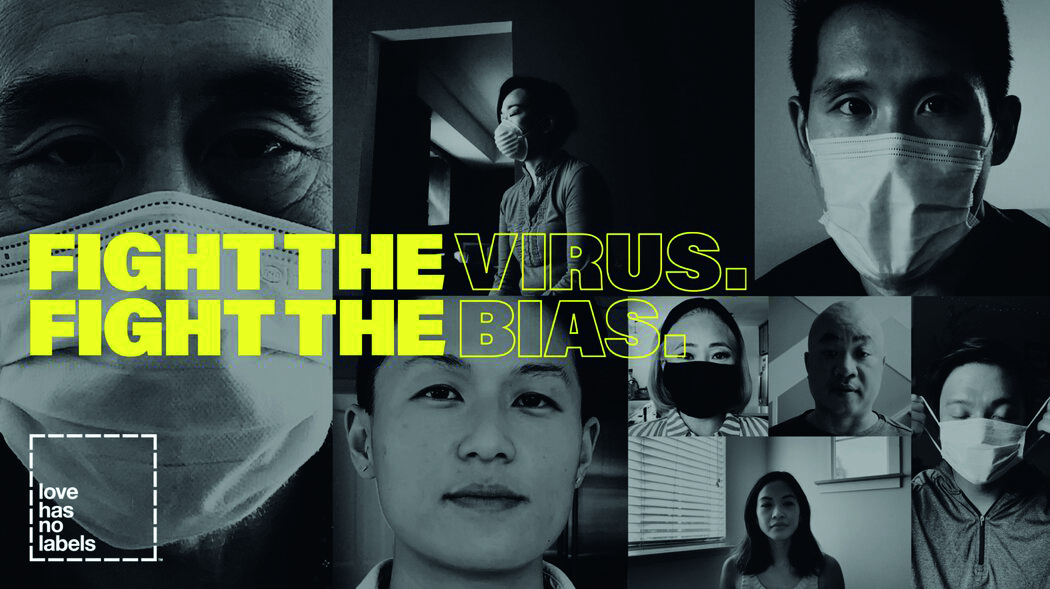
- Why has this campaign become especially relevant after the year 2020?
- Read the title of the article in which this picture was published. Answer it: Can ads and hashtags help against the hate and harassment of Asian people?
selfi-tchéqui
1. Go over Unit 7, as well as your answers and notes in your notebook. Then choose the options that best assess your achievements and write them in your notebook.

|
I can... |
|
|
|
|---|---|---|---|
|
understand a photojournalism article about racism... |
|||
|
understand campaigns on racism... |
|||
|
use the present simple, past simple and present perfect to talk about human rights... |
|||
|
understand linking words... |
|||
|
understand audios about racism... |
|||
|
discuss human rights using linking words... |
|||
|
write a campaign on human rights... |
Respostas e comentários
1. Because hate and harassment toward Asian people have increased in the context of the coronavirus pandemic, which makes ads like these more necessary.
2. Respostas pessoais. Sugere-se comentar com os ou as estudantes acerca de campanhas sobre diferentes tipos de discriminação, que ganharam fôrças nas redes sociais, como o rréchitégui (cerquilha, sustenido)MeToo (contra o sexismo) e o rréchitégui (cerquilha, sustenido)BlackLivesMatter (contra o racismo).
Self-check. Respostas pessoais.
Self-check
professor ou professora, espera-se que cada estudante use esta seção para avaliar o seu aprendizado ao longo da unidade, de modo a identificar com quais itens teve facilidade, alguma facilidade e dificuldade, e, se necessário, com sua ajuda, organizar um plano de ação sobre como pode aprimorar o próprio aprendizado e como pode auxiliar os ou as colegas.
Acompanhando a aprendizagem
professor ou professora, para cada item do “Self-check”, há uma sugestão de encaminhamento de trabalho para os ou as estudantes com dificuldade. Sugere-se que os estudantes:
- explorem a fotorreportagem do apêndice “lãrning mór ” para trabalhar com as características do gênero;
- leiam outras campanhas não publicitárias sobre o tema e busquem analisá-las, de modo a compreender qual é a defesa feita pela campanha e as estratégias de persuasão utilizadas;
- pesquisem exemplos de uso de cada tempo verbal em jornais de língua inglesa e expliquem o uso de cada um deles em determinado contexto;
- pesquisem na internet ou em livros de língua inglesa os conectores (linquin uôrds)e refaçam as atividades em que eles são trabalhados, de modo a compreender o que cada um deles expressa;
- ouçam novamente os áudios, acompanhando-os com as respectivas transcrições;
- pesquisem mais o tema discutido pelo grupo e, então, anotem seus comentários e argumentos, de maneira sucinta e clara.
- façam mais uma campanha não publicitária, dessa vez sobre outro tema relacionado aos direitos humanos. Se julgar necessário, indicar uma pesquisa prévia em língua portuguesa para, então, escrever a campanha em língua inglesa.